Ask The Plant Expert: “Can you identify these weeds? Please Help! I am in Central California and want to pasture some milk goats. I know the one with yellow “fruit” is a member of the Nightshade family and deadly to goats. Please help me identify what is growing here!” – Mad Science
Is My New Croton Okay Around Kitty?
Ask The Plant Expert:
I got a plant for Mother’s Day. It’s name is Croton, it’s a black waxy leaf with red veins in it. I went online and on one web site it stated that it is highly poisonous to pets and people. I have it on my enclosed patio and my cats go out there all the time. So i was wondering if i should return it? If you could please email me back asap, cause I’d like to keep the plant, but I love my cats and myself more. Thank you for any help, or if your not sure if you could maybe have any ideas on who i could contact. Thank-you, Anneke
Yes, the croton house plant is toxic for plants and people, but only if it’s digested. If you’re cat has a habit of chewing on plants, you may want to try a different plant. However, the plant tastes terrible, and accidental poisonings are rare.
If any part of the croton is ingested, it would cause vomiting and/or diarrhea, and in large doses could be fatal. It is also a good idea to wear gloves when pruning, and wash your hands after touching the plant.
Although crotons are toxic, they are a beautifully colored house plant that requires little care to maintain. As long as you leave it alone and teach kitty to not crave croton salads, you can live happily with your new plant. However, if you think your cat is prone to chewing on leaves, you might consider a different plant. Be sure to check the FSN House Plant Toxicity List for help.
Top 5 Houseplants For Fido (Safe For Pets)
When it comes to our pets, like kids, we are very protective. You might have given up growing green plants in your home just to keep them safe. However, you don’t have to abandon all house plants! These 5 house plants are great and safe for Fido!
African violets (Saintpaulia) are well-known, colorfully blooming plants found in many gardens, or kept as houseplants. With an array of colors including violet, blue, red, white, pink, cream, soft yellow, and bi- or multicolored flowers, it’s easy to see why. Care of African violets is relatively easy and requires an environment of bright to moderate, but consistent light in an evenly moist and humid atmosphere. The African Violet is also safe for cats and dogs!
Schlumbergera bridgesii or Christmas Cactus is a cactus from the coastal mountains of south-eastern Brazil. Plants grow on trees or rocks in habitats which are generally shady with high humidity and can be quite different in appearance from their desert-dwelling cousins. This flower is usually available in white, pink, yellow, orange, red or purple. This blooming plant is perfect for houses with cats and dogs!
Bird’s Nest Fern (Asplenium nidus) plants are tropical plants native to Hawaii and the Pacific Islands. Very slow-growing, Asplenium nidus plants are excellent for seasoned houseplant growers. Care for Asplenium nidus plants, sometimes known as spleenwort, requires attention to watering and propagation, but does not require as much attention to fertilization and light as many other houseplants. Bird’s Nest Fern plants, though care is not for the faint of heart, make beautiful additions to homes, rock gardens, and patios, in addition to being safe for your pets.
Parlor Palm (Chamaedora elegans) is a very popular houseplant with rich green, slightly arched and slender leaves. Parlor Palm plants are often passed from generation to generation as they are very slow-growing and live actively for many years. This pet-friendly house plant ranges from a few inches to three feet, making Parlor Palm plants ideal for tabletop decorations, terrariums, and other small spaces inside a house. Care for Parlor Palm plants is moderately easy; they require an evenly moist environment with moderate humidity.
10 Houseplants Poisonous To Dogs, Cats, or Children
Ask the Expert: what are the names of plants and flowers that are poisonous.
I work as a floral designer and I am asked all the time what plants and flowers are poison to animals and humans. Kelly
Reply:
Kelly,
First I want to clarify the difference between “poisonous as in deadly” and “poisonous as an irritant”. Many plants listed as poisonous are not deadly or really toxic, but rather cause an irritation to the mouth, stomach, skin or respiratory system. Why is this important? Because the classification of plants being poisonous is matter of interpretation and myths. For example, poinsettias are considered poisonous which is not all together true. There is no documented case where someone has died from ingesting a poinsettia. Secondly, the amount one a would have to ingest in order to accumulate the toxin level for death would be immense. However, poinsettias can cause great irritation to the skin or mouth.
When we discuss poisonous houseplants, we should take the approach that the American Animal Hospital Association takes on its Healthypet.com site with regards to its guide to toxic plants and foods. They state, “If you have these plants or foods, you need not dispose of them-just keep them away from pets and children.” Of course, plants that are deadly may not need to be in the home of small children or young pets. However, plants that can cause irritation or stomach upset may only need to be placed somewhere pets and children can’t reach them.
Here is a quick top 10 guide to plant toxicity for florists (note there may be plants that are carried by florists that are not listed. In these cases you will have to research that specific plant or email me and I will find out and add it to the list).
Houseplants with High Poison Plant Classification
According to many sources these ten houseplants are highly toxic to dogs, cats or children. The toxicity resides in ingesting the plants. So it is important to keep these away from dogs, cats or children who might chew on them. They are all wonderful plants and should not be excluded from our lives as long as we keep them under appropriate supervision.
Flowers that are considered highly poisonous are: Foxglove (Digitalis), Amaryllis bulb, Bleeding heart, Lily-of-the-valley, Delphinium, Larkspur, Monkshood, Anthurium, lilies and Calla lily. Many times with flowers it is the bulb from which they come that is toxic if eaten by a dog or a cat.
There are other houseplants and flowers that are considered a mild or moderate risk. Although not a complete list by any means, this is a short break down of plants or flowers that cause a mild or moderate irritation or toxicity in dogs, cats or children:
Peace lily, Chinese evergreen, Benjamin fig, Corn Plant, Dracaenas, Nephthytis, rubber plant, Pothos,
English Ivy, Mother-in-law tongue, Azlaea, Croton, Easter Lily, Hyacinth, Daffodils, Chrysanthemum, Bird of Paradise, iris, lupine.
You can find more information on the Healthypet.com prevent poisonings page or the ASPCA Animal Poison Control Page.
Hopefully this information will help you and your customers select the appropriate houseplants and flowers for their specific situation.
I have had many of these plants and flowers in my home. Fortunately for me my puppies found that these plants were not interesting and did not taste good. I don’t worry about having “poisonous” plants in my home or yard. I do make a mental note of plants that can be harmful in case my vet needs to know my dogs have been exposed to.
Click on the button below to find the right house plant for your home. Flowering house plants keep us smiling and cheery; green house plants ease our minds and provide comfort, while tropical house plants make us feel composed and sophisticated.
If you don’t see a particular plant on the lists above. Contact me for a more comprehensive list.
Order a House Plant
How Do I Love Sansevieria Plants? Let Me Count The Ways!
When I think of houseplants that are easy to care for, simple for beginners to gardening, and rather enjoyable to behold, I count Mother-in-law’s Tongue among the tally. This starter houseplant is amazing! It is tolerant of slight neglect, only needs to be watered moderately, prefers partial shade but can survive in full Arkansas sun (the proof is in the picture), and grows quickly so that I have a beautiful plant to look upon for months at a time! Thankfully, I’ve discovered that you can also buy Mother-In-Law’s Tongue houseplants for nearly anyone because of just how simple it is to care for them!
I’ll admit it. I traded a green thumb for other talents. While I still contend that the powers that be have brilliantly gifted me with these, it does my heart no good to enjoy a home with pitiful-looking houseplants. For people like me who have had to earn our gardening merits, a really great basic is the Mother-In-Law’s Tongue houseplant. With the ability to produce beautiful white to cream-colored blooms next to the bold interweaving of light and dark green striped leaves, Mother-In-Law’s Tongue beautifully completes the décor of any home or garden.
Also known as Snake Plant or by its scientific name, Sansevieria trifasciata laurentii, Mother-In-Law’s Tongue delivers boldly striped beauty in a very proud fashion for homes needing a subtle dash of attitude in the home décor. Unfortunately, my house is filled to the brim with this type of confident charm and our houseplants need only add casual visual appeal. The good news for me is that Mother-In-Law’s Tongue houseplants can be stylish, subtle, casual, bold, decorated creatively, or used just to add color to a bland room. The sky, rather the ceiling I suppose, is the limit with Snake Plant houseplants.
My good friend Jamie Jamison Adams of the Ask The Expert blogs has proven that Mother-In-Law’s Tongue is also a very sustainable garden plant. Even better! Arkansas heat can sometimes feel like Calcutta in July only more humid. Though typically thriving in indirect light, Jamie’s Sansevieria plant accents her garden and has bloomed nicely in full sun and a healthy dose of Arkansas heat. While Jamie is an expert plant care provider, experienced gardeners, beginning gardeners and everyone in between should feel at ease with caring for Mother-In-Law’s Tongue plants. Busy lives seem only to be getting busier. For the busiest of us all, these plants are simple and hardly time-consuming, in other words, perfect houseplants!
A Dog, a Cat and a Peace Lily — Fun and Games or Disaster Waiting to Happen?
Ask the Expert: Is a Peace Lily poisonous to pets.
I have one and caught my pet bitting it. Tina
Kalanchoe
Ask the Expert: what kind of plant is this? is it safe for pets?
I can’t find it on the internet….it’s one of the only things I can grow inside and not kill, because I’m not very good with house plants. Also, I’m keeping it away from my cats since I don’t know what it is or if it’s poisonous. Could you tell me what it is called, and if it’s safe for pets?
Thank you,
Lee Ann / Fort Worth
Lee Ann,
You have a Kalanchoe. Although I haven’t heard of any cats having a problem with Kalanchoe, it is listed as a plant that has some toxicity for cats. According to the ASPCA poison plant list “This plant contains components that can produce gastrointestinal irritation, as well as those that are toxic to the heart, and can seriously affect cardiac rhythm and rate”. Dogs can also be affected. However, it is my understanding that they would have to ingest a fair dose to cause severe problems. Most animals stay away from the plants that are bad for them. Azaleas are listed as toxic to dogs, but my dogs have lived around Azalea for six years. If you have a very curious cat who likes to chew on inappropriate items, I would keep it away from the Kalanchoe.


 Find Your
Find Your 

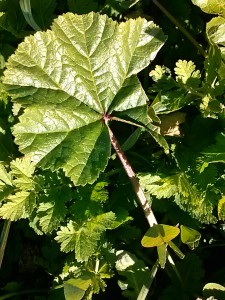
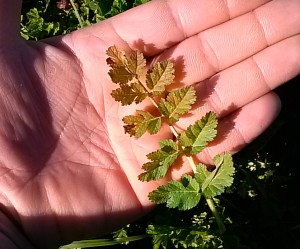
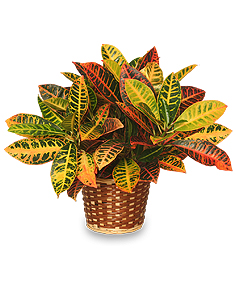
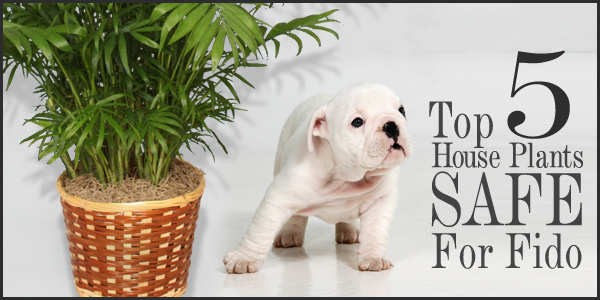
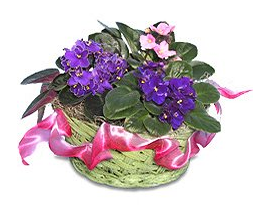
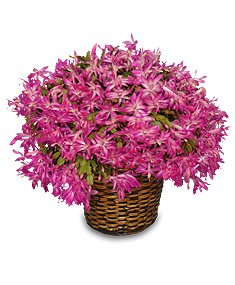
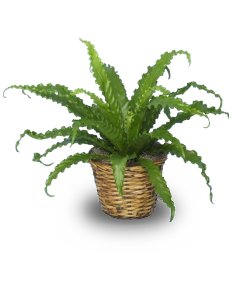
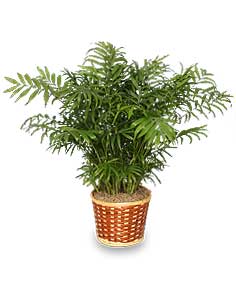
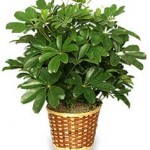
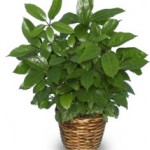
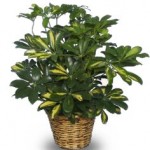
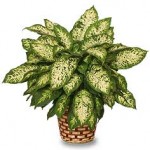
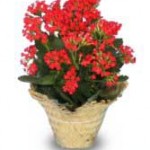

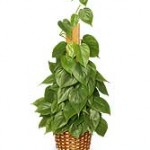
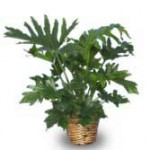
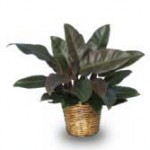
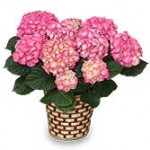
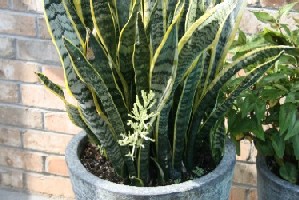 Buy Sansevieria For Your Garden!
Buy Sansevieria For Your Garden!